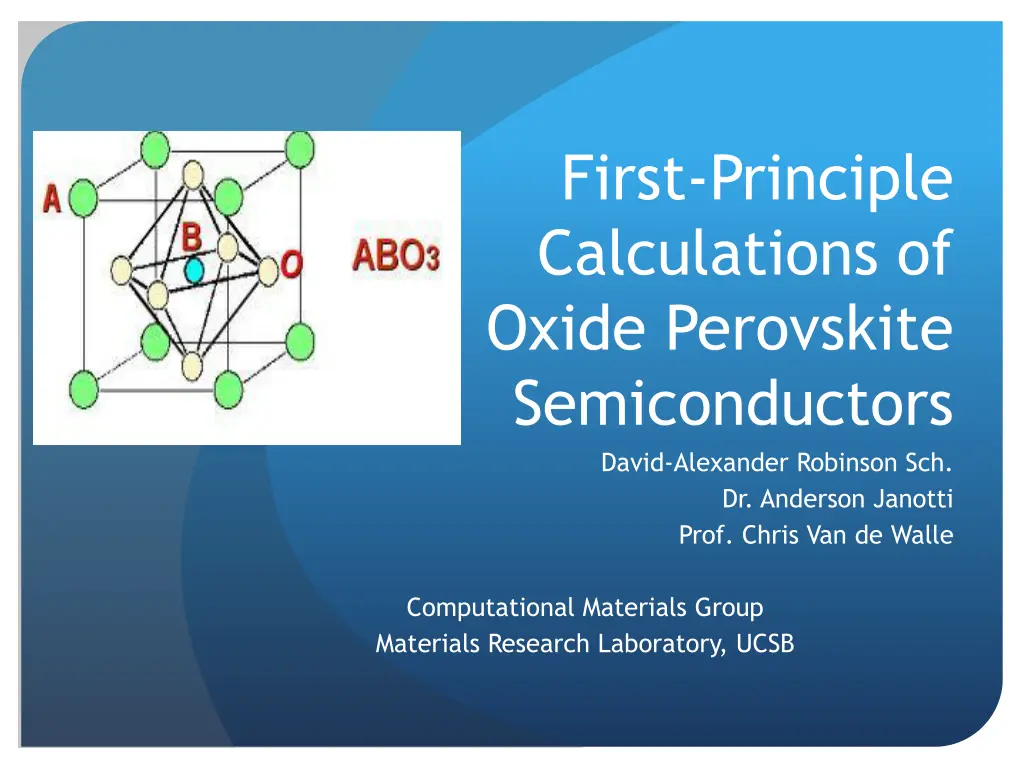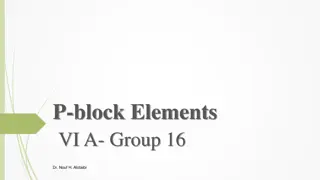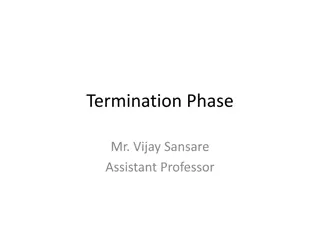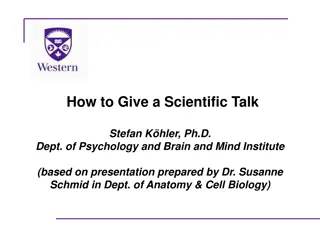
First-Principle Calculations of Oxide Perovskite Semiconductors
Explore the world of complex oxide perovskite semiconductors through first-principle calculations. This study delves into the implications, methodology, results, and comparisons utilizing GGA and HSE methods. Witness the electronic properties, band structures, lattice constants, and band gap variations of prominent oxide perovskite materials, offering insights into novel electronic materials and applications in transparent conductors and wide band-gap semiconductors.
Download Presentation

Please find below an Image/Link to download the presentation.
The content on the website is provided AS IS for your information and personal use only. It may not be sold, licensed, or shared on other websites without obtaining consent from the author. If you encounter any issues during the download, it is possible that the publisher has removed the file from their server.
You are allowed to download the files provided on this website for personal or commercial use, subject to the condition that they are used lawfully. All files are the property of their respective owners.
The content on the website is provided AS IS for your information and personal use only. It may not be sold, licensed, or shared on other websites without obtaining consent from the author.
E N D
Presentation Transcript
First-Principle Calculations of Oxide Perovskite Semiconductors David-Alexander Robinson Sch. Dr. Anderson Janotti Prof. Chris Van de Walle Computational Materials Group Materials Research Laboratory, UCSB
1 Introduction Complex Oxide Perovskite Semiconductors; Crystals of the form ABO3 A = Mono-, Di- or Trivalent element; Li, K, Mg, Ca, Sr, Ba, Sc, Y, La, Gd B = Transition Metal cation; Ti, Zr, Hf, Y, Nb, Ta or; Al, Ga, In Implications? Explaining experimental results using fundamental theory. Novel electronic materials. Transparent conductors; Wide Band-Gap Semiconductors. 5/5/2025
2 Methods Hybrid Functionals Heyd-Scuseria-Ernzerhof (HSE) Combines both Hartree-Fock and Density Functional Theory methods to give a more accurate result. Vienna Ab-initio Simulation Package (VASP) code An Iterative method. VASP works to minimise the energy of the system by filling up electron bands and relaxing the lattice constant in turn High Performance Computing California NanoSystems Institute (CNSI), UCSB. Ranger Cluster, Texas Advanced Computing Center, U Texas. 5/5/2025
SrHfO3 3 Results I Band Structure Plot Comparisons using GGA (General Gradient Approximation) SrTiO3 a = 0.414 nm SrZrO3 a = 0.395 nm 5/5/2025 a = 0.419 nm
SrHfO3 4 Results II Band Structure Plot Comparisons using HSE (Heyd-Scuseria-Ernzerhof ) SrTiO3 a = 0.414 nm SrZrO3 a = 0.395 nm 5/5/2025 a = 0.419 nm
5 Results III HSE vs. GGA Accepted experimental values a = 0.3905 nm; Eg = 3.25 eV SrTiO3 using GGA SrTiO3 using HSE a = 0.39483 nm; Eg = 1.8 eV a = 0.39046 nm ; Eg = 3.332 eV 5/5/2025
6 Results IV Lattice Constants and Indirect R- band gaps, using GGA and HSE On using HSE we get band gap widening of 1.5 0.2 eV * crystal a (nm) [GGA] a (nm) [HSE] Eg (eV) [GGA] Eg (eV) [HSE] Eg diff (eV) BaTiO_3 0.40380 0.39934 1.5436 3.1847 1.6411 BaZrO_3 0.42506 0.42276 2.9927 4.5073 1.5146 CaTiO_3 0.38964 0.38511 1.7036 3.4088 1.7051 GdAlO_3 0.37256 0.36835 0.3796 2.9004 4.3289 1.4285 GdGaO_3 0.38431 2.8069 4.2252 1.4183 LaAlO_3 0.38098 0.37772 3.4934 4.8867 1.3933 LaGaO_3 0.39280 0.38738 3.3386 4.7459 1.4072 MgTiO_3 0.38510 0.38004 1.6005 3.1846 1.5841 ScAlO_3 0.36457 0.36063 2.2320 2.8631 0.6311 SrTiO_3 0.39483 0.39046 1.6465 3.3326 1.6861 SrZrO_3 0.41943 0.39049 3.1819 3.3171 0.1352 5/5/2025 Y.AlO_3 0.37182 0.36814 2.8012 2.7757 -0.0255
7 Results V Band Alignment Calculations; Gives a Valance Band Offset of 0.19 eV LaAlO3-GdAlO3 Electrostatic Potential, V Displacement, x 5/5/2025
8 Results VI Band Alignment Calculations; Gives a Valance Band Offset of 0.44 eV LaAlO3-GdAlO3 Electrostatic Potential, V 5/5/2025 Displacement, x
9 5/5/2025
10 5/5/2025
11 5/5/2025






















